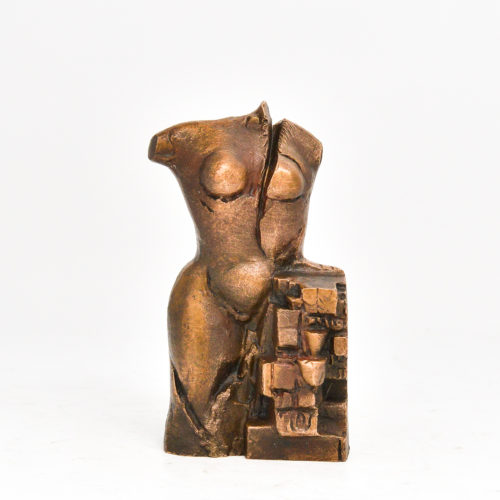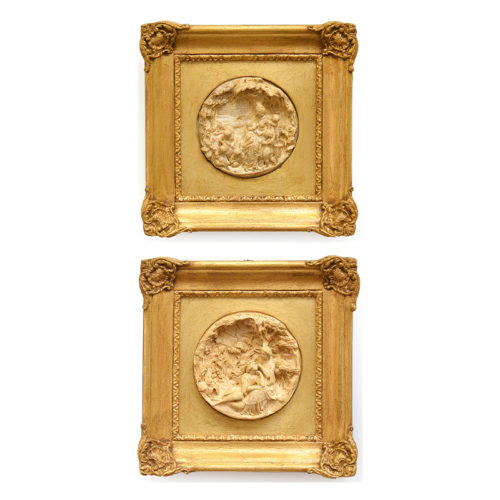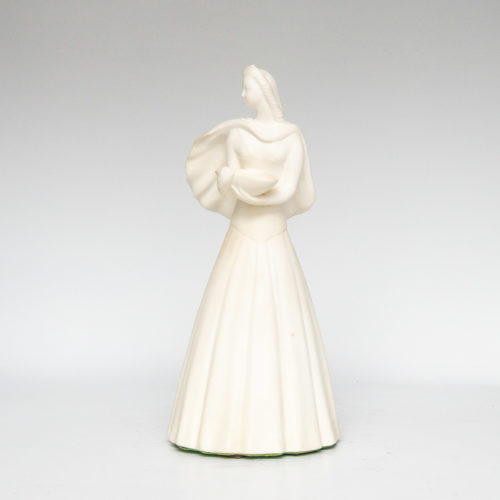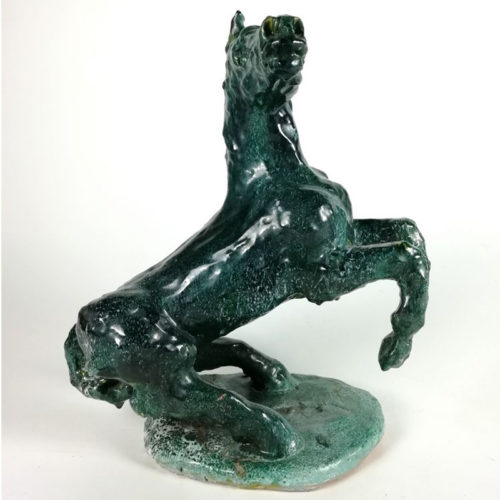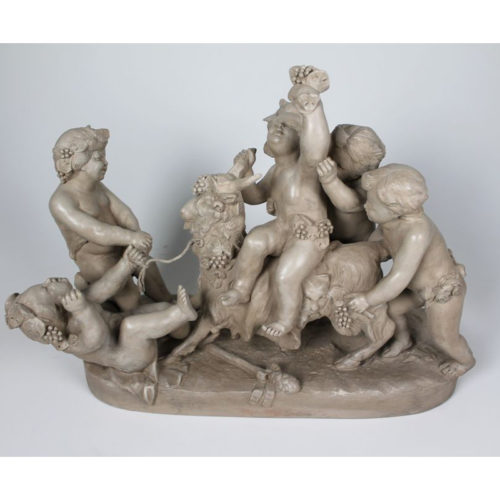Small bronze by Edmondo Cirillo, Neapolitan sculptor born in 1931, dating back to the 80s
-
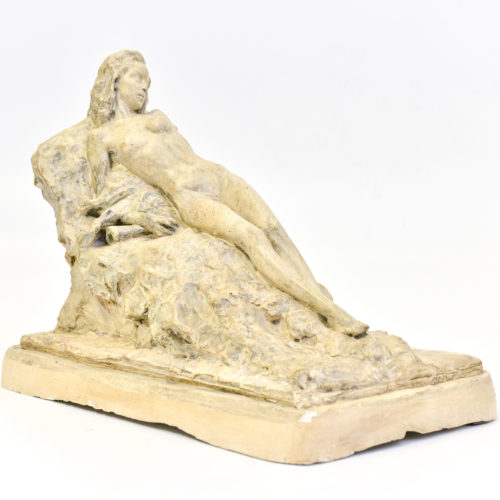 Plaster statue representing a female nude (Diana with the horn) by Giuseppe Siccardi (Albino, 18 July 1883 - Libya, 1911), Italian sculptor. The work is mentioned in the book entitled "Siccardi" by Silvana Milesi, Corponove Editrice. Period: Late 1800s / early 1900s Measurements: H 46 x L 56 x P 37 cm
Plaster statue representing a female nude (Diana with the horn) by Giuseppe Siccardi (Albino, 18 July 1883 - Libya, 1911), Italian sculptor. The work is mentioned in the book entitled "Siccardi" by Silvana Milesi, Corponove Editrice. Period: Late 1800s / early 1900s Measurements: H 46 x L 56 x P 37 cm -
Out of stock
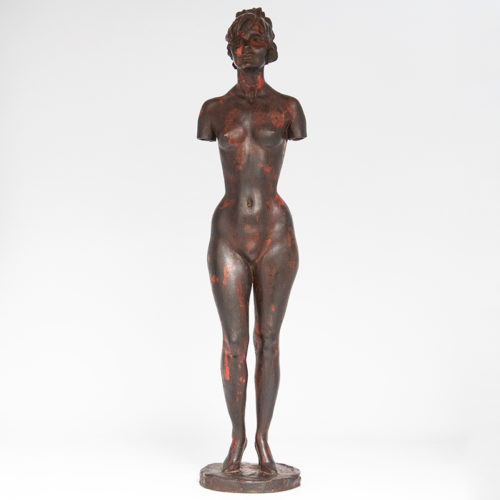 "Donna", unique bronze work by the master Francesco Messina (1900-1995), in dark patina and burgundy shades, authentic from 1990 by the CSD (Milan art center). The master and his art: The artist, Sicilian by birth, trained in Genoa and Milanese by adoption, who was able to experience all the artistic seasons of the 1900s. He has been able to filter and summarize in his works the feeling of time and its passing year after year, work after work, with an always original and coherent look at the poetics of the material. Cocteau said of Messina that "he does not strive to run faster than beauty (...) he walks leaving large footprints on the sand, without the subsequent waves of fashion erasing them". (Cit) Period: 20th century Measurements: H 60 x L 12 x P 8 cm
"Donna", unique bronze work by the master Francesco Messina (1900-1995), in dark patina and burgundy shades, authentic from 1990 by the CSD (Milan art center). The master and his art: The artist, Sicilian by birth, trained in Genoa and Milanese by adoption, who was able to experience all the artistic seasons of the 1900s. He has been able to filter and summarize in his works the feeling of time and its passing year after year, work after work, with an always original and coherent look at the poetics of the material. Cocteau said of Messina that "he does not strive to run faster than beauty (...) he walks leaving large footprints on the sand, without the subsequent waves of fashion erasing them". (Cit) Period: 20th century Measurements: H 60 x L 12 x P 8 cm -
 Bronze sculpture by Sandrun entitled "My teacher Tòni dël Fatin". Perfect in patina, excellent condition This work is present in Sandrun's monograph and contains the following description: "His master? Of course" Tòni dël Fatin ", friend of the artist, who died hit by a car right in front of the church of Cossila San Grato, was his teacher. And it was just as the student modeled it in clay and then cast in bronze. An angular, wise, ironic little man, humbled by the weight of years and misery. He had a lot of influence on our Franceschino, especially on the way we relate to the real world, to nature, to men. Like the Greeks , Sandrun also tried to bring out their personality from these figures, not only by working on the face, but also on the body and on the attitudes that life forces us to assume "Period: 1965 Measurements: H 60 x W 35 x D 29 cm
Bronze sculpture by Sandrun entitled "My teacher Tòni dël Fatin". Perfect in patina, excellent condition This work is present in Sandrun's monograph and contains the following description: "His master? Of course" Tòni dël Fatin ", friend of the artist, who died hit by a car right in front of the church of Cossila San Grato, was his teacher. And it was just as the student modeled it in clay and then cast in bronze. An angular, wise, ironic little man, humbled by the weight of years and misery. He had a lot of influence on our Franceschino, especially on the way we relate to the real world, to nature, to men. Like the Greeks , Sandrun also tried to bring out their personality from these figures, not only by working on the face, but also on the body and on the attitudes that life forces us to assume "Period: 1965 Measurements: H 60 x W 35 x D 29 cm -
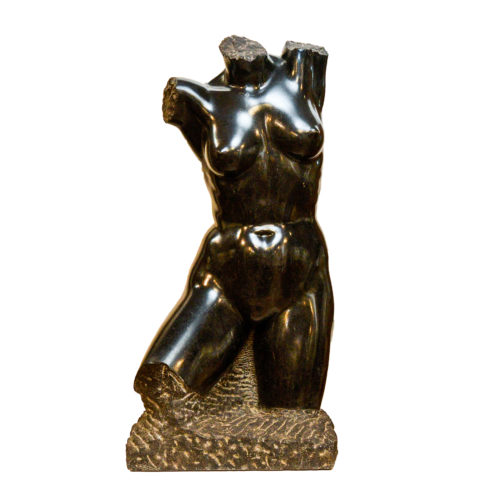 Virgilio Audagna (1903-1995). Born in February 1903 in Cannes, France, where his father and his family had temporarily moved for work. Returning to Italy, he completed his artistic studies and attended the Academy of Fine Arts in Turin. During his artistic career, he has created both large monuments and small-format works. Active not only in Italy but also abroad, where he often stayed, he also had the opportunity to perform models for medals, of sacred and profane subjects, to commemorate numerous events. In addition to being a sculptor, he was a draftsman and painter. He died in Turin in 1994. The work represents a female nude, green marble sculpture.Period: 20th century Measurements: H 94 x W 43 x D 45 cm
Virgilio Audagna (1903-1995). Born in February 1903 in Cannes, France, where his father and his family had temporarily moved for work. Returning to Italy, he completed his artistic studies and attended the Academy of Fine Arts in Turin. During his artistic career, he has created both large monuments and small-format works. Active not only in Italy but also abroad, where he often stayed, he also had the opportunity to perform models for medals, of sacred and profane subjects, to commemorate numerous events. In addition to being a sculptor, he was a draftsman and painter. He died in Turin in 1994. The work represents a female nude, green marble sculpture.Period: 20th century Measurements: H 94 x W 43 x D 45 cm -
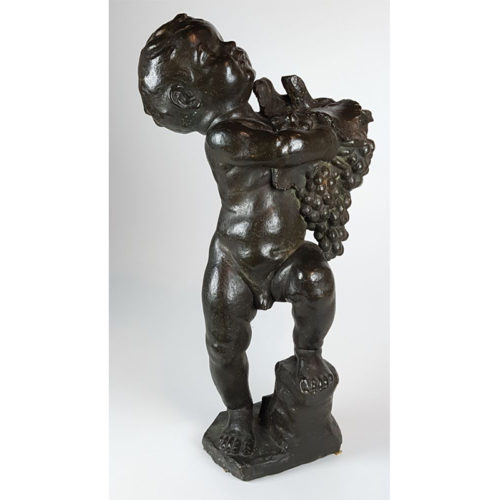 Here is a splendid work by Valmore Gemignani, depicts a small Bacchus, God of wine and harvest, as well as the pleasure of the senses and fun. The sculpture has never undergone restoration works or incisive cleanings, in fact it has maintained a splendid patina.Period: about 1920 Measurements: H 75 cm
Here is a splendid work by Valmore Gemignani, depicts a small Bacchus, God of wine and harvest, as well as the pleasure of the senses and fun. The sculpture has never undergone restoration works or incisive cleanings, in fact it has maintained a splendid patina.Period: about 1920 Measurements: H 75 cm -
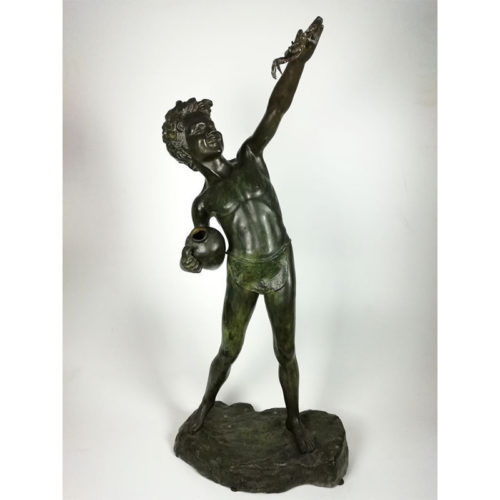 Bronze sculpture by Giovanni De Martino (Naples 1870-1935), was an Italian sculptor, active in Paris. Known for the production of sculptures, small bronze busts, in particular Popolane, street urchins and fishermen with realistic features. This work "Guy with crab" is in excellent condition. Signed by the author on the amphora.Period: Early 1900s Measurements: H 123 x L 56 cm
Bronze sculpture by Giovanni De Martino (Naples 1870-1935), was an Italian sculptor, active in Paris. Known for the production of sculptures, small bronze busts, in particular Popolane, street urchins and fishermen with realistic features. This work "Guy with crab" is in excellent condition. Signed by the author on the amphora.Period: Early 1900s Measurements: H 123 x L 56 cm
